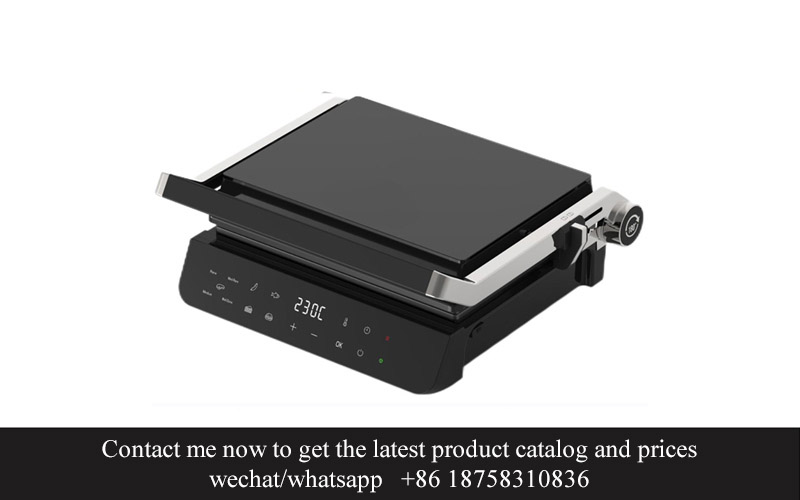Address
304 North Cardinal
St. Dorchester Center, MA 02124
Work Hours
Monday to Friday: 7AM - 7PM
Weekend: 10AM - 5PM
Address
304 North Cardinal
St. Dorchester Center, MA 02124
Work Hours
Monday to Friday: 7AM - 7PM
Weekend: 10AM - 5PM

In a world where culinary adventures are as diverse as the ingredients themselves, the role of cookware has evolved from mere utility to a key player in the art of cooking. The advancements in cookware technology have not only enhanced the cooking experience but have also brought about a wave of innovative solutions that cater to the ever-growing demands of consumers. From the introduction of non-stick coatings to the latest in energy-efficient designs, the evolution of cookware reflects a commitment to both convenience and culinary excellence. As we delve into the intricacies of this ever-changing landscape, it becomes clear that the future of cookware is not just about innovation, but about sustainability, health, and the joy of cooking itself.
The evolution of cookware technology has been a fascinating journey, marked by continuous innovation and a relentless pursuit of convenience, efficiency, and health. From the primitive pots and pans used by our ancestors to the sleek, high-tech appliances of today, the transformation has been remarkable.
Early cookware was often made from natural materials like clay, stone, or metal, each with its own limitations. Clay pots, for instance, were durable but prone to cracking, while stone was heavy and required a lot of effort to clean. Metal, while more durable, could be reactive, altering the taste of food and posing health risks.
As the centuries passed, advancements in metallurgy led to the creation of better cookware materials. Cast iron, with its excellent heat retention and durability, became a staple in many kitchens. However, it required seasoning and was not ideal for delicate cooking methods.
The 20th century brought a wave of innovation, with the introduction of non-stick coatings. Teflon, the first widely available non-stick coating, revolutionized cooking by allowing food to release easily from the surface, reducing the need for excessive oil and fat. This not only made cooking easier but also healthier.
With the rise of environmental consciousness, there has been a shift towards more sustainable cookware options. Stainless steel, known for its longevity and non-reactive properties, has seen a resurgence. It’s durable, easy to clean, and can withstand high temperatures, making it a popular choice for professional chefs and home cooks alike.
Ceramic cookware has also gained popularity, offering a non-stick surface that is free from harmful chemicals often found in traditional non-stick coatings. It is scratch-resistant, microwave-safe, and can be used on induction cooktops, making it a versatile option for modern kitchens.
The advent of smart technology has not been left out in the evolution of cookware. Smart cookware with built-in sensors and digital interfaces allows users to monitor cooking times and temperatures remotely. Some models can even adjust the heat automatically to ensure perfect cooking results every time.
Another significant development has been the introduction of induction cooktops, which use electromagnetic fields to heat pots and pans directly. This technology is highly energy-efficient and provides precise temperature control, which is particularly beneficial for delicate cooking methods like simmering or sautéing.
In the realm of health and safety, the demand for LFGB compliant non-stick coatings has grown. LFGB (Legislation of the Federal Institute for Risk Assessment) is a set of stringent regulations in Germany that ensure the safety of consumer products, including cookware. These coatings are free from PFOA and PTFE, two chemicals that were once common in non-stick coatings but have been linked to health concerns.
The evolution of cookware technology has also been influenced by culinary trends. As people become more interested in international cuisines, cookware that can handle a variety of cooking techniques and heat sources has become more important. Multifunctional cookware sets that can sear, sauté, simmer, and bake have become increasingly popular.
In conclusion, the evolution of cookware technology reflects the changing needs and values of society. From the practicality of non-stick coatings to the health-consciousness of LFGB compliance, the industry continues to adapt and innovate, making cooking not just a necessity but an enjoyable and efficient experience.

Non-stick coatings have revolutionized the way we cook, making kitchen tasks more efficient and enjoyable. These innovative coatings are designed to reduce sticking, making it easier to release food from pots and pans without the need for excessive oil or butter. Let’s delve into the importance of non-stick coatings and how they have become an integral part of modern cooking.
One of the primary benefits of non-stick coatings is the convenience they offer. Cooking with traditional cookware often requires the use of high heat and large amounts of oil to prevent food from sticking, which can lead to flare-ups and burned food. Non-stick coatings eliminate the need for such precautions, allowing for healthier cooking methods. With less oil, there’s a lower risk of developing heart disease and obesity, making non-stick coatings a healthier choice for both individuals and the environment.
Another advantage is the ease of cleaning. Food particles that do stick to non-stick surfaces tend to fall off more easily, reducing the time and effort required to clean pots and pans. This not only saves water but also reduces the need for harsh chemicals, which can be harmful to the skin and the environment. The simplicity of cleaning non-stick cookware makes it an appealing option for busy households and individuals looking to minimize kitchen cleanup.
Non-stick coatings are also known for their durability. High-quality non-stick coatings, such as those that meet LFGB (German Food, Drug, and Cosmetic Products Act) standards, are designed to withstand regular use without wearing down. This means that cookware with these coatings can last for years, providing a cost-effective solution for those who want to invest in long-lasting kitchenware.
In terms of versatility, non-stick coatings open up a world of cooking possibilities. They allow for a wide range of cooking techniques, from sautéing to frying, without the risk of food sticking. This versatility is particularly beneficial for those who enjoy experimenting with different recipes and cooking styles.
Moreover, non-stick coatings can improve the taste of food. Since they require less oil, the flavor of the food is more pronounced, making it possible to enjoy the true taste of ingredients. This is especially important for dishes that rely on the natural flavors of the ingredients, such as stir-fries and omelets.
For those who are health-conscious, non-stick coatings offer an additional layer of protection. They are often made with materials that are free from harmful chemicals like PFOA (perfluorooctanoic acid), which have been linked to health issues. The use of safer alternatives, such as ceramic or titanium, ensures that cookware is not only non-stick but also safe for everyday use.
In the realm of sustainability, non-stick coatings play a significant role. By reducing the amount of oil used in cooking, these coatings contribute to a lower carbon footprint. Additionally, since they are designed to last longer, they reduce the need for frequent replacements, thereby reducing waste.
The importance of non-stick coatings extends beyond personal use to commercial kitchens as well. Chefs and restaurant owners appreciate the ease of cooking and cleaning that these coatings provide, which can lead to increased efficiency and lower labor costs.
In conclusion, non-stick coatings have become a staple in the kitchen due to their convenience, health benefits, durability, versatility, and environmental friendliness. They have transformed the cooking experience, making it simpler, healthier, and more enjoyable for millions of people around the world.

Non-stick coatings have become a staple in modern kitchenware, offering convenience and ease of use. However, the safety and quality of these coatings are paramount. This is where LFGB compliance steps in, serving as a crucial standard for ensuring the safety of cookware products.
The German Food, Drug, and Cosmetic Act (LFGB) is a comprehensive regulatory framework that sets stringent requirements for the safety of food contact materials in Germany. Its principles have been adopted and adapted by many countries around the world due to its rigorous standards. The LFGB covers a wide range of materials, including those used in cookware, and it is essential to understand why this compliance is so vital.
One of the key reasons for LFGB compliance is the potential health risks associated with cookware. When non-stick coatings are used, they are often applied to aluminum, stainless steel, or other metals to create a smooth, non-reactive surface. However, if these coatings are not of high quality, they can flake off or degrade over time, releasing harmful substances into food.
The LFGB addresses this concern by setting limits on the amount of heavy metals and other potentially toxic elements that can migrate from cookware into food. For example, the standard specifies maximum permissible levels for lead, cadmium, and mercury, which are known to be harmful to human health. By adhering to LFGB guidelines, manufacturers ensure that their products are safe for everyday use.
Another aspect of LFGB compliance that is critical to safety is the testing and certification process. Products that meet LFGB standards must undergo rigorous testing to confirm their safety. This includes not only chemical analysis but also microbiological testing to ensure that the materials are free from harmful bacteria and pathogens. This thorough vetting process provides consumers with peace of mind, knowing that their cookware is not only non-stick but also safe.
The LFGB also addresses the issue of food allergies and intolerances. Some individuals have allergies or sensitivities to specific substances that may be present in cookware. The standard helps protect these consumers by specifying the types of materials that can be used in cookware without causing adverse reactions. This is particularly important for products intended for use by children, the elderly, and those with compromised immune systems.
In addition to health concerns, LFGB compliance also addresses environmental issues. The regulations require that the manufacturing process of cookware be environmentally friendly, minimizing waste and the use of harmful chemicals. This commitment to sustainability ensures that consumers are not only safe but also responsible when it comes to the environmental impact of their kitchenware.
The importance of LFGB compliance extends beyond the individual consumer. For manufacturers, adhering to these standards is a testament to their dedication to quality and safety. It can also open up new markets, as countries that recognize LFGB standards are more likely to accept products that meet these criteria. This can be a significant competitive advantage in the global cookware market.
Moreover, LFGB compliance is not static; it evolves with new scientific findings and technological advancements. This means that manufacturers must stay up-to-date with the latest research to ensure that their products continue to meet the highest safety standards. This commitment to ongoing improvement demonstrates a company’s long-term vision and responsibility towards its customers.
In conclusion, LFGB compliance is a vital standard for ensuring the safety of non-stick cookware. It protects consumers from potential health risks, supports environmentally friendly manufacturing practices, and provides a benchmark for quality and responsibility. By adhering to these stringent guidelines, manufacturers can offer products that not only make cooking easier but also contribute to a safer and healthier kitchen environment.

The evolution of cookware technology has led to the creation of numerous advancements, with non-stick coatings being a standout innovation. Among these coatings, LFGB compliant non-stick coatings have emerged as a testament to safety and quality. These coatings offer a unique blend of practicality and health-conscious features, making them a favorite among consumers. Let’s delve into the details of this innovative product.
Non-stick coatings have been around for decades, but the demand for higher quality and safer options has never been more intense. LFGB compliant non-stick coatings represent a significant leap forward in this regard. The LFGB, or Lebensmittel- und Bedarfsgegenständegesetz, is a stringent set of German regulations that govern the safety of food contact materials. These regulations ensure that products are free from harmful substances, making them suitable for direct contact with food.
One of the key aspects of LFGB compliant non-stick coatings is their low toxicity. Traditional non-stick coatings often contained perfluorooctanoic acid (PFOA), a chemical that has been linked to health issues. However, LFGB compliant coatings are free from PFOA, offering a safer alternative for both consumers and the environment. This shift towards safer materials is not just a regulatory requirement; it’s a reflection of the industry’s commitment to responsible innovation.
The manufacturing process of LFGB compliant non-stick coatings is another area where innovation shines. These coatings are typically made using a process called plasma spray, which involves depositing a layer of non-stick material onto the cookware surface. This method ensures a durable and even coating that withstands high temperatures and frequent use. The result is a cookware surface that is not only non-stick but also long-lasting.
The non-stick properties of LFGB compliant coatings are not just about convenience; they also have a significant impact on health. Cookware with non-stick coatings reduces the need for excessive oil, leading to healthier meals with fewer calories and less fat. This is especially beneficial for individuals looking to maintain a healthy diet or manage their weight. Moreover, the ease of cleaning these pans means less time spent scrubbing and fewer chemicals used in the cleaning process.
In terms of environmental impact, LFGB compliant non-stick coatings also stand out. The use of eco-friendly materials and processes means that these coatings are more sustainable. They contribute to reducing waste and the release of harmful chemicals into the environment, making them a responsible choice for eco-conscious consumers.
The design of LFGB compliant non-stick cookware also reflects a deep understanding of consumer needs. Cookware with these coatings often features ergonomic handles, comfortable to grip and heat-resistant. The lightweight construction allows for easier handling and improved cooking performance. These design elements make the cookware not just safe and healthy, but also enjoyable to use.
In the competitive cookware market, brands are continuously seeking ways to differentiate themselves. LFGB compliant non-stick coatings provide a unique selling point. Consumers are increasingly aware of the importance of safety and health in their daily lives, and the assurance of LFGB compliance can be a significant factor in their purchasing decisions.
Moreover, the versatility of LFGB compliant non-stick coatings cannot be overstated. These coatings are suitable for a wide range of cooking methods, from sautéing to baking. The ability to use metal utensils without worrying about scratching the coating adds to the appeal of these cookware sets.
As the global health consciousness grows, the demand for LFGB compliant non-stick coatings is likely to increase. The industry is responding with a variety of cookware options that cater to different cooking styles and preferences. From professional-grade cookware to budget-friendly sets, the variety of LFGB compliant non-stick options is expanding.
In conclusion, the innovation of LFGB compliant non-stick coatings represents a significant milestone in the evolution of cookware technology. These coatings offer a safer, healthier, and more convenient cooking experience. As consumers continue to prioritize safety and quality in their kitchenware choices, LFGB compliance will likely become a standard expectation rather than an added feature.

Cooking can be a delightful and rewarding experience, but it’s not without its challenges. Enter LFGB compliant non-stick coatings, a game-changer for consumers seeking convenience, health, and ease in the kitchen. Here’s how these innovative coatings bring a world of benefits to your cooking endeavors:
Effortless Cleaning: Imagine tossing your spatula and scrubbing brush aside. Non-stick coatings are designed to reduce the need for excessive cleaning. Food releases from the surface easily, which means less time spent on post-cooking cleanup and more time to enjoy your meal.
Healthier Cooking: Traditional cookware often requires the use of high heat and excessive oil to prevent food from sticking. LFGB compliant non-stick coatings allow for healthier cooking methods. With less oil needed, you can enjoy dishes that are lower in fat and calories, contributing to a balanced diet.
Versatility in Cooking: Whether you’re searing a steak or making a delicate omelet, non-stick coatings offer a versatile cooking surface. They accommodate a wide range of cooking techniques, from sautéing to simmering, making them perfect for both beginners and seasoned chefs.
Longevity of Cookware: Non-stick coatings are not just about convenience; they also enhance the longevity of your cookware. The ease of cleaning and the reduced risk of food particles and oils damaging the surface mean that your pots and pans can last longer, providing years of reliable service.
Cooking Efficiency: Thanks to their non-stick properties, these coatings allow heat to be distributed more evenly across the surface. This means your food cooks more evenly and quickly, saving energy and reducing cooking times. Who doesn’t love a faster meal without compromising on taste?
Ease of Food Preparation: Preparing meals becomes a breeze with non-stick coatings. No more worrying about delicate ingredients sticking to the pan or burning on high heat. This feature is particularly beneficial when working with sticky substances like honey, jam, or batter.
Food Tastes Better: The non-stick surface prevents food from absorbing the flavors of the pan, which can sometimes alter the taste of your dishes. This means your food retains its natural flavors, resulting in a purer and more authentic taste experience.
Child-Friendly Cooking: For families with young children, non-stick coatings can be a lifesaver. The ease of use and the reduced risk of burns make cooking with kids a safer and more enjoyable activity.
Environmental Impact: By using less oil and cleaning agents, LFGB compliant non-stick coatings contribute to a lower environmental footprint. This is especially important in a world where sustainability is a growing concern.
Cooking for Special Diets: For those following specific dietary needs, such as low-carb, gluten-free, or paleo diets, non-stick coatings offer a versatile option. They allow for a variety of cooking methods that align with these dietary guidelines.
Eco-Friendly Materials: Many modern non-stick coatings are made from eco-friendly materials, further reducing the environmental impact. Consumers can feel good about using cookware that is not only safe for their health but also for the planet.
In conclusion, the benefits of LFGB compliant non-stick coatings are vast. They enhance the cooking experience by offering convenience, health benefits, and efficiency. With these coatings, cooking becomes not just easier, but also more enjoyable and sustainable.

In recent years, the cookware industry has seen a surge in innovation, driven by changing consumer preferences and technological advancements. Here’s a snapshot of some key insights and market trends shaping the landscape:
Eco-friendly materials are gaining traction. As environmental concerns rise, consumers are increasingly seeking cookware made from sustainable materials like bamboo, ceramic, and stainless steel. This shift is prompting manufacturers to invest in research and development to produce eco-conscious products.
Smart appliances are becoming more popular. With the rise of the Internet of Things (IoT), smart cookware that can connect to home automation systems is capturing the interest of tech-savvy consumers. Features like temperature control, Bluetooth connectivity, and built-in recipe apps are becoming standard in modern cookware.
Multi-functional cookware is on the rise. Consumers are looking for cookware that can do it all, whether it’s a single pan that can sear, sauté, and simmer or a set that includes different accessories for various cooking techniques. This demand is pushing manufacturers to create more versatile and all-in-one cooking solutions.
Health and wellness are driving trends. There’s a growing awareness of the health impacts of cookware, with consumers increasingly avoiding non-stick pans that contain potentially harmful chemicals like PFOA and PTFE. As a result, alternative non-stick coatings and materials like ceramic and glass are becoming more sought after.
Globalization has expanded market reach. The cookware industry is becoming more global, with European and American brands now competing on a global scale. This has led to increased competition and a wider variety of products being available to consumers worldwide.
Online sales are booming. The convenience of online shopping has significantly impacted the cookware market. Consumers are turning to e-commerce platforms for their cookware needs, which has spurred growth in direct-to-consumer sales and a rise in online marketing strategies.
Social media influence is growing. Influencers and bloggers are playing a significant role in shaping the cookware market. With their ability to sway consumer opinions, these individuals are promoting certain brands and products, which can quickly become trending.
Demographic shifts are impacting demand. Changes in population demographics, such as an aging population in Europe and the rise of single-person households in the US, are influencing the types of cookware that are in demand. For instance, there’s a trend towards products that are easier to handle and store, catering to the needs of older adults and those living alone.
Sustainability initiatives are becoming a norm. Companies are not just focusing on the materials used in cookware but also on the sustainability of their manufacturing processes. This includes reducing waste, using renewable energy sources, and ensuring fair labor practices.
Smart packaging and branding are catching on. As consumers seek more information about the products they purchase, there’s a growing trend towards smart packaging that provides detailed information about the product’s origin, materials, and care instructions. Branded experiences are also becoming more personalized, with companies offering customized options and packaging.
Health regulations are a constant challenge and opportunity. Compliance with health and safety standards, such as those set by the LFGB (Deutsches Institut für Gütesicherung und Konformität), is critical for manufacturers. Adhering to these regulations not only ensures safety but also opens up new markets and opportunities for compliant products.
The market for professional-grade cookware is expanding. There’s a growing segment of consumers who are interested in high-quality, professional-grade cookware for home use. This trend is being driven by the rise of food enthusiasts and the popularity of cooking shows that showcase gourmet cooking.
The rise of ethnic and fusion cuisine is influencing cookware design. As global flavors become more integrated into everyday cooking, cookware that can handle a wide range of cooking techniques is becoming more popular. This includes cookware that can handle high heat for searing and lower heat for delicate sauces.
The importance of energy efficiency is gaining attention. Consumers are increasingly considering the energy efficiency of cookware, especially with rising energy costs. Cookware that conducts heat better and retains it longer can lead to significant energy savings.
The market for organic and natural cookware is expanding. With the rise of organic food trends, there’s a growing market for cookware made from organic and natural materials. This includes cookware that is free from synthetic dyes, preservatives, and other artificial additives.
These insights and trends highlight the dynamic nature of the cookware industry, where innovation, consumer demands, and market forces continue to shape the direction of product development and sales strategies.

The rise of smart appliances has transformed the kitchen into a hub of innovation. From induction cooktops to air fryers, consumers are seeking products that not only enhance their cooking experience but also offer convenience and efficiency. In this landscape, product ideas that integrate cutting-edge technology with user-friendly design are gaining traction. Here are some forward-thinking concepts that could shape the future of kitchen appliances:
Incorporating AI for Personalized CookingImagine a cookware set that learns from your preferences and adjusts its settings accordingly. An AI-driven system could track your cooking habits, recommend recipes, and even optimize the cooking time and temperature for the best results. This level of personalization would make cooking a more enjoyable and intuitive process.
Energy-Efficient and Sustainable SolutionsWith the growing awareness of environmental issues, energy-efficient and sustainable kitchen appliances are becoming increasingly popular. Products made from recycled materials, equipped with energy-saving modes, and designed to reduce food waste could become standard in the future. These innovations not only benefit the consumer but also contribute to a greener planet.
Interactive Cooking AssistantsInteractive cooking assistants, similar to personal chefs, could be integrated into cookware. These assistants would provide real-time advice, monitor cooking progress, and alert users when it’s time to flip or add ingredients. This interactive experience could make cooking less intimidating for novices and more enjoyable for seasoned chefs.
Multi-Functional Appliance DesignThe kitchen is no longer just a place for cooking; it’s a multipurpose space. Appliances that can perform multiple tasks, such as a countertop unit that can grill, bake, and steam, are becoming a sought-after product. This design not only saves space but also simplifies meal preparation, allowing users to cook a variety of dishes with a single appliance.
Augmented Reality for Recipe DiscoveryAugmented reality (AR) could revolutionize the way we discover new recipes. By scanning ingredients in your pantry or fridge, AR apps could suggest recipes and even show you how to prepare them step by step. This interactive experience could make cooking feel like an engaging game, encouraging experimentation and creativity in the kitchen.
Eco-Friendly Cooking TechniquesAs concerns about health and the environment grow, eco-friendly cooking techniques are gaining attention. Induction cooktops, which use magnetic fields to heat pots and pans directly, are more energy-efficient than traditional electric or gas burners. Innovations in these technologies could make them more affordable and accessible to a wider audience.
Smart Sensors for Quality ControlSmart sensors could be embedded in cookware to ensure food is cooked to the perfect temperature and texture. These sensors could work in conjunction with the AI system to provide precise cooking instructions, ensuring that every dish is cooked consistently, regardless of the user’s skill level.
Water-Saving and Energy-Efficient AppliancesWater is a precious resource, and appliances that conserve water are becoming more important. From dishwashers with eco-friendly cycles to refrigerators with built-in water filtration systems, products that prioritize water conservation are likely to be well-received by environmentally conscious consumers.
Health Monitoring in CookwareCookware that can monitor and report on the nutritional content of the food being prepared could become a valuable tool for health-conscious individuals. By providing real-time information on calories, vitamins, and minerals, these appliances could help users make informed choices about their diet.
The integration of these product ideas into the market will depend on a combination of technological advancements, consumer demand, and market trends. As the kitchen evolves, so too will the appliances we use, offering us more choices to enhance our cooking experiences and improve our lives.

The journey through the world of cookware has been marked by continuous innovation and improvement. As we stand at the precipice of what could be the next culinary revolution, it’s important to reflect on the strides we’ve made and the possibilities that lie ahead. From the evolution of non-stick coatings to the stringent LFGB compliance, the consumer landscape has transformed significantly. Let’s delve into the implications of these changes and the exciting prospects they bring.
In recent years, the demand for eco-friendly and sustainable kitchen appliances has surged. Consumers are not just looking for products that make cooking easier; they’re seeking solutions that align with their values and contribute to a greener planet. This shift has spurred a wave of product development focused on energy efficiency, recyclable materials, and reduced waste.
The integration of smart technology in cookware has also become a focal point. Imagine a skillet that adjusts its temperature based on the type of food being cooked or a smart oven that provides step-by-step cooking instructions. These advancements not only make cooking more convenient but also ensure that every dish is cooked to perfection, thanks to precise control over heat and timing.
The rise of electric cooktops has been a game-changer for many. They offer versatility and a quick response to temperature changes, which is particularly beneficial for those who enjoy the art of cooking or are short on time. Moreover, electric cooktops often come with safety features that protect against overcooking and accidental burns.
As we explore the future prospects, one cannot ignore the growing popularity of induction cooking. This technology utilizes magnetic fields to heat pots and pans directly, leading to faster and more energy-efficient cooking. Induction cooktops are not only safer than traditional gas burners but also provide better temperature control, which is crucial for delicate cooking techniques.
Another area ripe for innovation is the design of cookware. Modern consumers are seeking cookware that not only performs well but also complements their kitchen aesthetic. Cookware that is both durable and visually appealing is becoming increasingly sought after. We’re seeing a surge in cookware that blends traditional materials with contemporary design elements, offering a harmonious blend of form and function.
The rise of sous-vide cooking has also influenced the cookware market. This technique involves vacuum-sealing food in airtight bags and cooking it in a water bath at a precise temperature. To support this method, manufacturers are producing cookware that maintains water temperatures with pinpoint accuracy. This not only opens up new culinary possibilities but also extends the shelf life of food, as sous-vide cooking can preserve nutrients and flavors.
In terms of materials, there’s a growing interest in alternative metals like aluminum and copper. While traditional stainless steel remains a favorite for its durability and longevity, these new materials offer different advantages. Aluminum is lightweight and excellent for even heat distribution, while copper is renowned for its superior heat conductivity. The challenge for manufacturers lies in creating cookware that combines these materials’ benefits while ensuring they are safe and non-toxic.
The rise of health-conscious consumers has also driven the market towards healthier alternatives. Non-stick coatings, once a point of contention due to concerns over their health impact, have evolved to include LFGB compliant options. These coatings are free from harmful chemicals like PFOA and PTFE, offering a safer cooking experience. This shift reflects the industry’s commitment to prioritizing consumer health and well-being.
When we look at the future, it’s clear that the cookware industry is poised for even more innovation. The integration of artificial intelligence could lead to cookware that learns from your cooking habits and suggests improvements, or even cook your meals for you. The use of augmented reality could revolutionize how we interact with our cookware, providing interactive recipes and cooking tips right on the kitchen counter.
As the world becomes more connected, the cookware industry is no exception. We’re seeing a trend towards global collaboration and cross-cultural design. Cookware companies are drawing inspiration from around the world, blending local cooking traditions with cutting-edge technology to create products that resonate with a global audience.
In conclusion, the cookware industry is at a fascinating juncture. Advances in technology, shifting consumer values, and the pursuit of health and sustainability are driving a wave of innovation. The future of cookware promises a world where cooking is not just a necessity but an enjoyable experience, enhanced by the latest technological advancements and thoughtful design. It’s an exciting time to be part of this industry, as we embark on a journey that will undoubtedly redefine the way we cook and live.